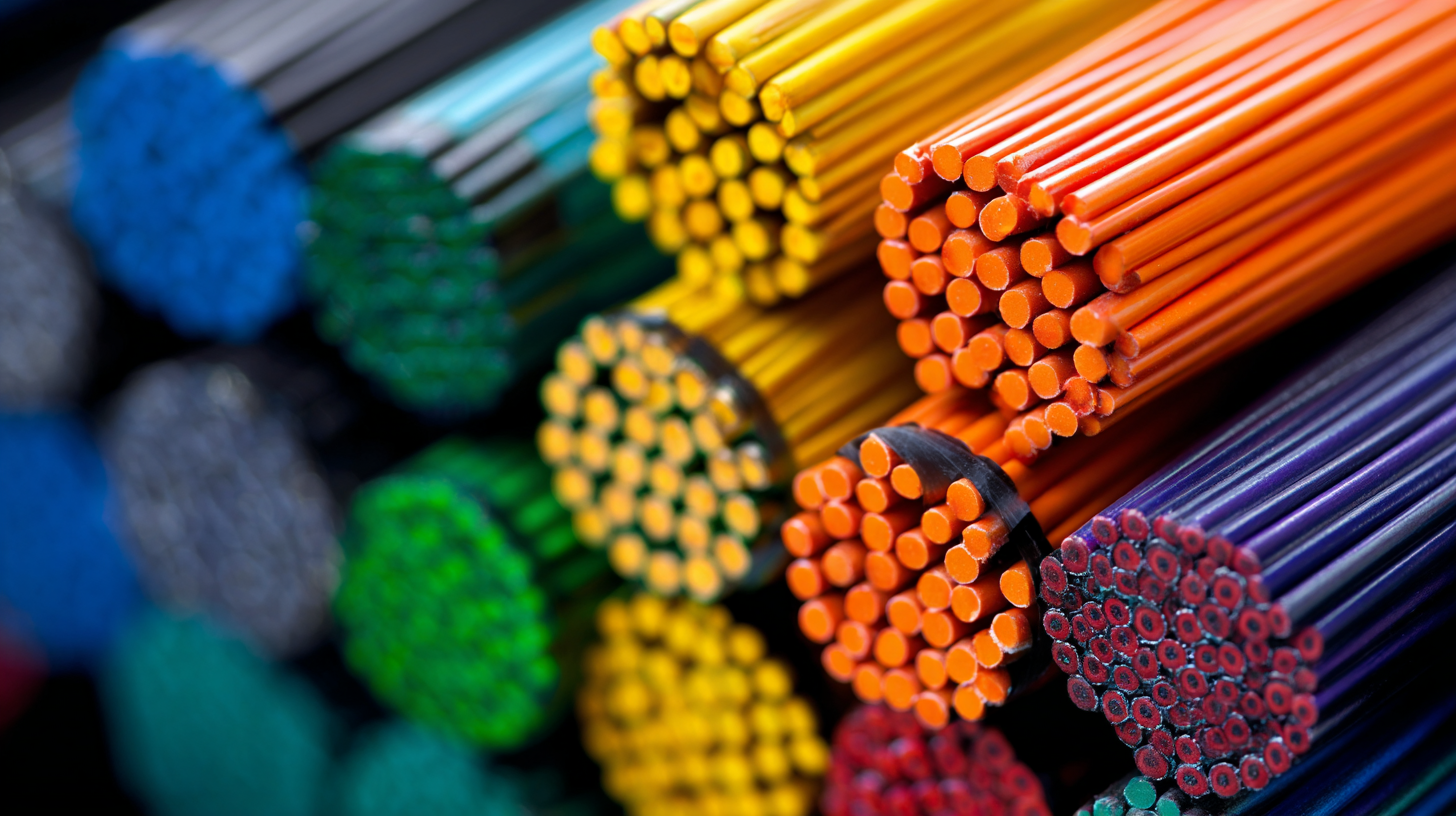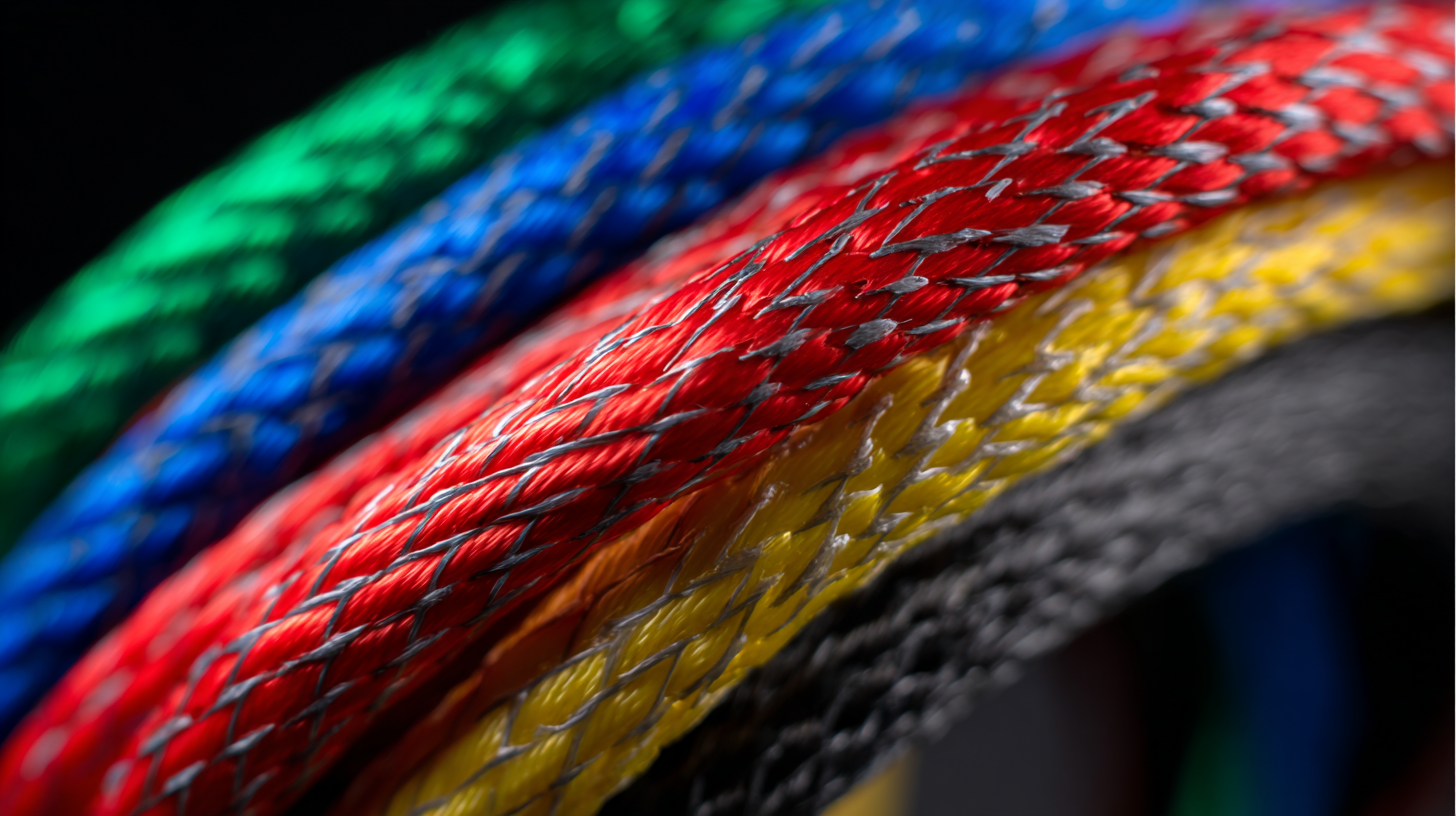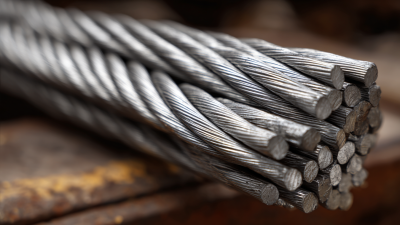
-
Home
-
Products
-
PVC Cable Material
-
Low Smoke Zero Halogen Cable Material
-
Cable material
-
Optical fiber cable
-
-
About Us
-
VR
-
News
-
Blog
-
Contact Us
Leave Your Message

In today's fast-evolving technological landscape, understanding the materials that drive our connectivity is crucial. One such essential component is PE cable material, known for its robust performance and versatility in various applications. This article explores the key properties of PE cable material, including its flexibility, resistance to moisture, and durability, which make it a preferred choice for numerous industries. We will delve into its applications, from telecommunications to power distribution, illustrating how this material enhances efficiency and reliability in systems worldwide. Moreover, we will provide practical insights on selecting the right PE cable material for specific needs, ensuring that engineers and technicians can make informed choices that align with industry standards. By the end of this guide, readers will have a comprehensive understanding of PE cable material and its significant role in modern infrastructure.

Polyethylene (PE) cable materials, particularly crosslinked linear low-density polyethylene (XLPE), are crucial in high-voltage applications due to their excellent electrical insulation properties. XLPE has gained prominence because of its superior thermal and mechanical performance. Recent advancements in tailoring the morphology of XLPE have shown significant improvements in its material properties, enhancing its suitability for high voltage direct current (HVDC) applications. For instance, adjusting the crystalline structure of XLPE can lead to better electrical breakdown strength, which is essential for efficient and safe cable operations.
Moreover, the performance of cable insulation is also influenced by environmental factors. A study analyzing the environmental moisture ingress characteristics in high-voltage cable port assemblies highlights the impact of temperature and humidity on the water absorption of cable materials. This investigation found that under varying temperature and humidity conditions, materials like XLPE and semi-conductive rubber demonstrate differing levels of moisture absorption, which can ultimately affect their long-term performance and reliability. Understanding these characteristics is critical for engineers and designers when selecting the appropriate insulation materials for specific applications, ensuring optimal performance in diverse environmental conditions.
The applications of PE cables span various industries, with a significant focus on renewable energy and sustainable practices. As the demand for clean energy sources grows, such as solar, wild, and hydropower, the effectiveness and reliability of electrical systems become paramount. PE cables, known for their durability and resistance to environmental factors, are increasingly utilized in renewable energy projects, ensuring efficient power transmission and minimizing energy loss. This trend not only supports the shift towards greener energy solutions but also fosters the growth of the cable materials market.
Moreover, the wire and cable materials market is witnessing notable growth influenced by the expanding telecommunications industry. High-performance cables are essential for meeting the demands of data transmission and connectivity. The rise of digitalization and the need for efficient energy distribution are driving investments in advanced cable materials, with a projected market size reaching USD 20.1 billion by 2035. In this landscape, PE cables are anticipated to play a crucial role, further cementing their importance across different sectors while adapting to the evolving needs of technology and sustainability.
 The growing focus on renewable energy and sustainable practices is significantly influencing the market for cable materials, particularly polyethylene (PE) cables. PE cables offer exceptional resistance to moisture, chemicals, and UV radiation, making them an excellent choice for outdoor applications, especially in renewable energy installations like solar farms and wind turbines. According to recent industry reports, the global market for PE cables is expected to grow at a compound annual growth rate (CAGR) of 6.5% from 2023 to 2030, driven by increasing investments in renewable energy infrastructure.
The growing focus on renewable energy and sustainable practices is significantly influencing the market for cable materials, particularly polyethylene (PE) cables. PE cables offer exceptional resistance to moisture, chemicals, and UV radiation, making them an excellent choice for outdoor applications, especially in renewable energy installations like solar farms and wind turbines. According to recent industry reports, the global market for PE cables is expected to grow at a compound annual growth rate (CAGR) of 6.5% from 2023 to 2030, driven by increasing investments in renewable energy infrastructure.
When comparing PE cables to other materials, such as PVC and rubber, PE demonstrates superior performance in various applications. For instance, PE cables maintain flexibility in low temperatures, which is crucial for installations in harsh environmental conditions. A report by leading market analysts indicates that the share of PE in the energy sector is projected to rise, with its application in renewable sources accounting for a significant portion of the growth, highlighting its compatibility with new energy technologies. As the push for sustainable solutions intensifies, the choice of cable materials will play a crucial role in enhancing efficiency and durability in energy systems.
 Polyethylene (PE) cables have increasingly become the preferred choice for electrical insulation in various applications due to their superior properties. One of the most significant advantages of PE cables is their excellent resistance to moisture and chemical environmental factors. According to a report by the International Electrotechnical Commission, PE cables can withstand temperatures ranging from -40°C to +90°C, making them suitable for both indoor and outdoor uses. The longevity and durability of PE cables are often cited, with average lifespans exceeding 30 years under optimal conditions.
Polyethylene (PE) cables have increasingly become the preferred choice for electrical insulation in various applications due to their superior properties. One of the most significant advantages of PE cables is their excellent resistance to moisture and chemical environmental factors. According to a report by the International Electrotechnical Commission, PE cables can withstand temperatures ranging from -40°C to +90°C, making them suitable for both indoor and outdoor uses. The longevity and durability of PE cables are often cited, with average lifespans exceeding 30 years under optimal conditions.
Additionally, PE cables maintain high dielectric strength, which is crucial for preventing electrical failures. A study by the IEEE Power and Energy Society shows that the dielectric constant of PE is relatively low compared to other materials, reducing energy loss and enhancing efficiency in power transmission. This property is particularly beneficial in high-voltage applications, where maintaining efficiency is paramount.
Tips: When selecting PE cables for your projects, be sure to consider the specific environmental conditions they will face. For example, in areas with extreme temperatures or humidity, choose PE cables that are rated for those particular conditions to ensure optimal performance. Always consult product specifications to ensure compatibility and longevity in your applications.
The growing focus on renewable energy and sustainable practices is significantly driving market growth for PE cables. With the shift towards greener solutions, renewable energy sources such as solar, wind, and hydropower are flourishing, creating an increased demand for high-performance cable materials. According to market forecasts, the cable material market is projected to reach USD 20.1 billion by 2035, showcasing a robust growth trajectory that reflects the industry's adaptation to sustainable energy requirements.
A Life Cycle Assessment (LCA) conducted on biodegradable linear low-density polyethylene (LLDPE) manufactured in India highlights the environmental and health impacts of various products within the sector. The findings revealed that additive production exemplifies the highest environmental footprint, underscoring the necessity for sustainable practices in cable manufacturing. Additionally, the implementation of mandatory recycled content in products, such as the requirement for 30% recycled plastic in PET beverage bottles by 2025, illustrates a significant industry shift towards mitigating plastic waste. Addressing these concerns is critical for manufacturers to align with emerging environmental regulations and consumer expectations while fostering a sustainable future.
| Property | Description | Environmental Impact | Sustainability Measures |
|---|---|---|---|
| Durability | High resistance to moisture, chemicals, and UV radiation | Long lifespan reduces waste | Recycling programs to reclaim materials |
| Flexibility | Easily installed in various environments | Lower energy consumption during installation | Promoting the use of flexible designs |
| Electrical Insulation | Excellent dielectric properties | Reduces risk of electrical hazards | Use of biodegradable insulation materials under research |
| Cost-Effectiveness | Lower production and maintenance costs | Economic incentives for sustainable production | Investing in green manufacturing technologies |
| Thermal Stability | Stable performance in varied temperature ranges | Minimizes risks of failure in extreme conditions | Development of high-temperature resistant cables |





